Churchill’s Butterflies
How butterflies get their colour
Chartwell House
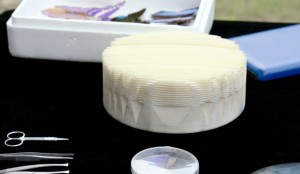
George McGavin “The natural world is alive with colour and no group of animals demonstrates that better than the butterflies. To find out more about how butterflies get their colours, I’ve come down to Chartwell in Kent, home of renowned butterfly enthusiast, Sir Winston Churchill.
I’ve met up with Matthew Oaks, a wildlife specialist with the National Trust, who’s looked at the work Churchill did here to make the gardens a haven or nature.
Matthew Oaks “Here, he became a pioneer of what we now call wildlife gardening, perhaps, especially butterfly gardening.”
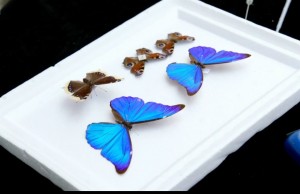
George McGavin “Churchill planted butterfly friendly plants throughout his garden and even converted this former summer-house into a butterfly house.”
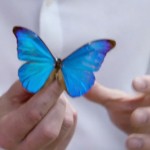
Matthew Oaks “Here, the great man would sit and watch his caterpillars munch and watch and wait or the chrysalis, the pupae, to emerge.and let them go free out into his garden.”
George McGavin “Churchill admired the beauty of butterflies but he probably didn’t know that some of their most striking colours were not made by pigments but by an altogether different phenomenon as Professor Peter Vukusic from Exeter University can reveal. Churchill really loved these insects and they are beautiful, but the origin of their colours is not quite what we’d expect.”
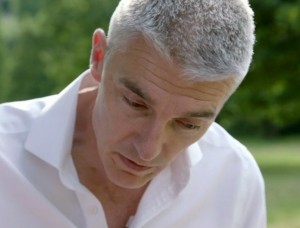
Professor Peter Vakusic “No, it’s not. We have three brown species that were flying right here in this field when Churchill was alive. And the origin of most of their colour is something called pigment On the top row we have Morpho butterflies, they are tropical butterflies from south and central America. On this side of the butterfly we have brown wing scales. Scales that are filled with the pigment melanin, but the scales that cover this side of the wing are entirely different. They have a microstructure “
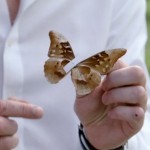
George McGavin “Using an electron microscope and a 3-D printer Peter has created a model of the wing’s intricate microstructure. So that is the exact representation of one tiny part of a scale?”
Professor Peter Vakusic “Yes, the top half exactly represents a one thousand times scaled-up version of what we see on the scale itself. The structure electively reflects just blue colour towards our eye or an observer, another butterfly.”
George McGavin “How would you prove to me that that is a structural effect and it isn’t just blue anyway.”
Professor Peter Vakusic “If we take a syringe full of a very clear oil, we can put one drop onto the wing, that oil then spreads through…”
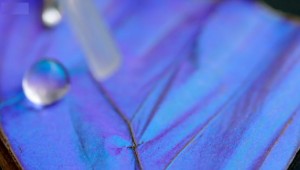
George McGavin “It’s gone completely brown. That oil has soaked into all the gaps of air in the wing scale and wrecked the whole effect. These insects are found in the rainforest they must get wet. Why doesn’t that have an effect?”
Professor Peter Vakusic “When we put a droplet of water onto this wing, we see that the water doesn’t wet the wing, instead it gathers up into a ball and it rolls right off. So, the very same microstructure that creates the color also creates a surface roughness, and water has a surface tension that doesn’t like surface roughness”
George McGavin “That is just a beautiful piece of evolution. In the years since Churchill’s death our understanding of these fragile insects has come on in leaps and bounds and it’s lovely to see the grounds of Chartwell continue to provide a refuge for his beloved butterflies”
Credits
The above information came from the BBC production ‘The One Show’ screened on 28th Jan 2016
